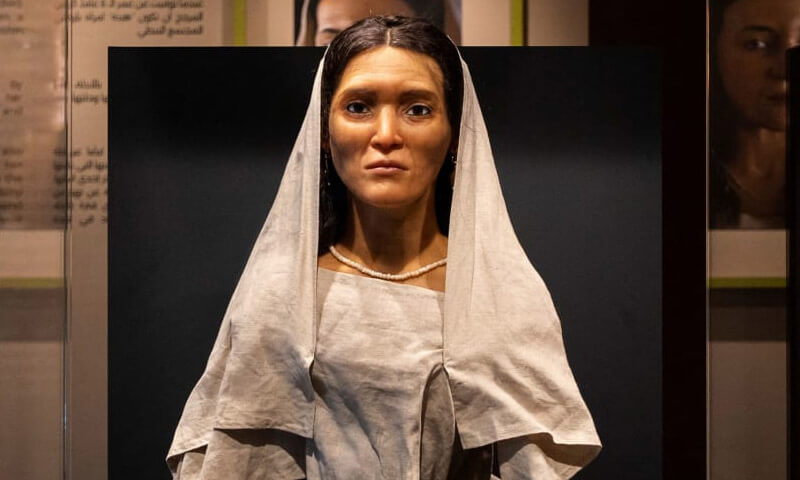After years of labor via way of means of historians and archaeologists, Saudi Arabia has unveiled the reconstructed face of a Nabataean girl who lived extra than 2000 years ago. The reconstruction is the first-of-its-type and is modelled over the stays of a Nabataean girl, Hinat, who changed into found in a 2,000-year-antique tomb in Hegra, a UNESCO World Heritage Site in AlUla, an historic oasis town in northwestern Saudi Arabia, CNN reported. The face changed into placed on show on the Hegra Welcome Center in AlUla on Monday. The reconstruction of Hinat commenced withinside the UK in 2019 after it changed into funded via way of means of the Royal Commission. The face changed into crafted from silicon, with pierced ears and synthetic hair in my opinion threaded into her scalp.
A group of professionals rebuilt bone fragments determined withinside the tomb to reconstruct an photo of her look the use of historic data. A 3-d printer changed into then used to sculpt the face of the girl, the document added. The Nabataeans have been a part of an historic civilisation that inhabited northern Arabia over 2,000 years ago. Petra changed into the capital in their kingdom, which have become a buying and selling hub for spices, remedy and fabric, the document added.
Lebanese-French archaeologist Laila Nehme, the director of the mission in an interview to National Geographic said, “The Nabataeans are a piece of a mystery: We realize a lot, however on the identical time we realize little or no due to the fact they did not depart any literary texts or records.” “Excavating this tomb changed into a awesome possibility to research extra approximately their concept of the afterlife”, she added.
“It tells us Hegra wasn’t simply an area of tombs, however a colourful location wherein human beings lived and labored and died. It’s cute to be reminded”, Leila Chapman, a consultant from the Royal Commission for AlUla instructed The National.
